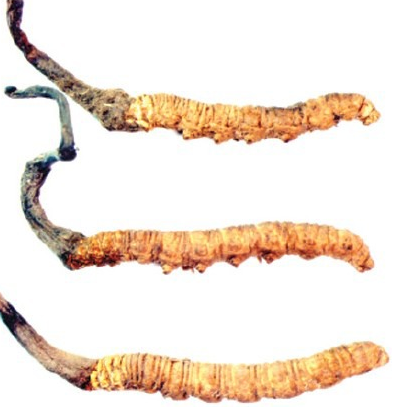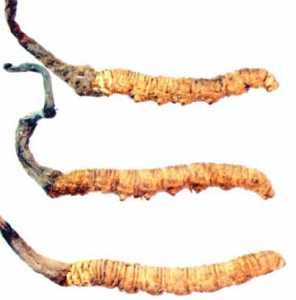
Caterpillar fungus facing extinction

The Caterpillar fungus, a new found natural commodity for the communities who live in the Himalayan region with a high economic value and this, in fact, lead to enormous ecological threats to the species, leading to its sharp decline in its natural habitat.
According to trade insiders, a single caterpillar fungus sells in India for £5.30 ($7), depending on the health and size of the fungus, while traders sell it to wholesalers or exporters for £13, 695 ( £18,000) a kg, and sought especially by the Chinese for its medicinal and aphrodisiac qualities.
In India, the caterpillar fungus grows in the high meadows, of Kanchandzanga biosphere reserve in Sikkim, Dehan-Debang Biosphere Reserve in Arunachal Pradesh and Nanda Devi Biosphere Reserve and Askot Wildlife Sanctuary in Uttarakhand adjoining Tibet. It appears above the ground just as the snow melts in May or June as local people rush to collect as much as 30 in a single day and sometimes not even a single one. The huge human pressure during the collection season is affecting the fragile mountain ecosystem, situated abut 4, 500 meters above sea level.
In Uttarakhand, villages from the Bhotiya tribe, go for a mass collection of caterpillar fungus ( Keera Jadi) that is like gold dust.
Wild Dong Chong Xia Cao, with the black part the fruiting body, brown part the caterpillar corpus.
The caterpillar fungus Ophiocordyceps sinensis, originally used in traditional Tibetan and Chinese medicine for over 700 years, is called e “ Yartsa Gunbu” or “DongChong Xia Cao” ( “winter worm-summer grass”) respectively and is regarded as “ soft gold” in China. The Cordyceps has over 30 bio activities, such as immunomodulatory, antitumor, anti-inflammatory and antioxidant activities.
The wild fungus which possesses a plant-like fruiting body and originates from a dead caterpillar that fills with mycelia generally called Sinensis or Cordyceps due to its insect shape appearance.
The O sinensis can be used to treat conditions such as hypo-sexuality, night sweats, hyperglycemia, hyperlipidemia, asthenia, arrhythmias and enhance immune function and protect Kidneys, lung, liver, and heart respiratorily.
